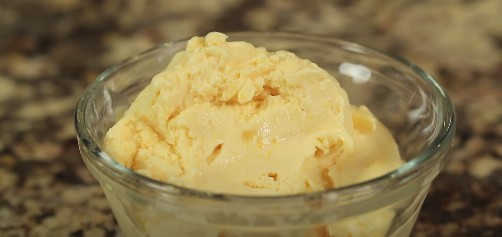Homemade cat food can be an excellent way to provide your feline companion with a personalized and nutritious diet.
However, ensuring the nutritional quality and safety of the food doesn’t end with its preparation – proper storage is equally crucial.
Importance of Proper Storage
Homemade cat food, whether cooked or raw, consists of fresh ingredients that can quickly spoil if not stored correctly. Just like human food, improper storage can lead to bacterial growth, loss of nutrients, and potential health risks for your cat.
By following proper storage practices, you can extend the shelf life of the food while preserving its nutritional value.
1. Refrigeration: The Key to Freshness
Refrigeration is a critical aspect of storing homemade cat food, as it slows down the growth of bacteria and helps maintain the quality of the food. Here are some guidelines to keep in mind:
a. Store in airtight containers: Transfer the homemade cat food into clean, airtight containers before placing them in the refrigerator. This prevents exposure to air and helps maintain the food’s flavor and texture.
b. Divide into portions: Consider dividing the homemade food into individual serving-sized portions. This way, you can thaw and serve only what your cat needs, reducing the risk of food wastage.
c. Label and date: Clearly label the containers with the date of preparation. This helps you keep track of the freshness of the food and ensures that you use the oldest batches first.
d. Refrigerator temperature: Set your refrigerator to a temperature of around 32°F to 38°F (0°C to 3.3°C). This range helps slow down bacterial growth and extends the shelf life of the food.
e. Use within a reasonable timeframe: While specific timelines can vary based on the type of ingredients and preparation methods, it’s generally recommended to use homemade cat food within 3 to 5 days of refrigeration.
2. Freezing: Preserving Nutrients and Freshness
Freezing is an effective method to extend the shelf life of homemade cat food, particularly if you prepare larger batches. Here’s how to properly freeze homemade cat food:
a. Portion and package: Divide the homemade cat food into portion-sized servings. Place each portion in airtight containers, freezer-safe bags, or ice cube trays, depending on your preferred portion size.
b. Remove excess air: When using freezer bags, press out excess air before sealing them to prevent freezer burn and maintain the food’s quality.
c. Label and date: Just like with refrigerated storage, label each container or bag with the date of preparation. This helps you keep track of the food’s freshness.
d. Freezer temperature: Set your freezer to a temperature of 0°F (-18°C) or lower. This temperature prevents bacterial growth and maintains the nutritional value of the food.
e. Use-by date: While freezing significantly extends the shelf life of homemade cat food, it’s recommended to use frozen food within 2 to 3 months for optimal quality.
3. Thawing: Safety First
Thawing homemade cat food is a crucial step to ensure your cat’s safety and enjoyment. Improper thawing can lead to uneven warming, bacterial growth, and loss of nutrients. Here’s how to thaw homemade cat food safely:
a. Slow thawing: The safest method for thawing homemade cat food is to do so gradually in the refrigerator. Place the portion you intend to feed in the refrigerator 24 to 48 hours before serving.
b. Microwave caution: If you need to thaw food quickly, you can use a microwave. However, be extremely cautious to avoid cooking any part of the food. Use the defrost setting and check the food frequently to prevent overheating.
c. Serve promptly: Once the homemade cat food is thawed, serve it promptly to avoid any spoilage or bacterial growth. If you have thawed excess food, refrigerate any leftovers and use them within the recommended timeframe.
4. Hygiene and Food Safety
Maintaining proper hygiene and food safety practices during the preparation, storage, and serving of homemade cat food is paramount. Wash your hands, utensils, and surfaces thoroughly before and after handling the food. Additionally, keep in mind the following tips:
a. Minimize cross-contamination: Prevent cross-contamination by using separate cutting boards and utensils for raw meats and other ingredients.
b. Avoid leaving food out: Homemade cat food, like any perishable food, should not be left at room temperature for extended periods. Always store it in the refrigerator or freezer when not serving.
c. Monitor your cat’s health: Pay attention to your cat’s health and behavior after consuming homemade food. If you notice any signs of digestive upset or illness, consult a veterinarian.
5. Balancing Variety and Nutrition
While storing homemade cat food, it’s essential to maintain a balance between providing variety and ensuring proper nutrition. Offering a variety of protein sources, vegetables, and other ingredients can enhance your cat’s overall diet. However, it’s equally important to ensure that the food meets your cat’s specific nutritional requirements.
6. Consult a Veterinarian
Before making homemade cat food a regular part of your cat’s diet, consult your veterinarian. They can provide guidance on formulating a nutritionally balanced diet, recommend supplements if necessary, and offer advice on storage and preparation.
In Conclusion
Storing homemade cat food properly is essential to maintain its nutritional value and prevent spoilage. Refrigeration and freezing are the primary methods for preserving the freshness of homemade cat food.
By following proper storage guidelines, practicing good hygiene, and monitoring your cat’s health, you can provide your feline friend with safe and nutritious meals that contribute to their overall well-being and happiness.
Remember that your cat’s health is the top priority, and consulting a veterinarian is essential when making decisions about their diet and care.
His professional interests include humane education, ethics, small animal behavior, and veterinary. As a pet lover from school life, having grown up with two cats and a dog. If he isn’t spending time with his friends and family, Justin enjoys traveling. Learn more about Justin here.

